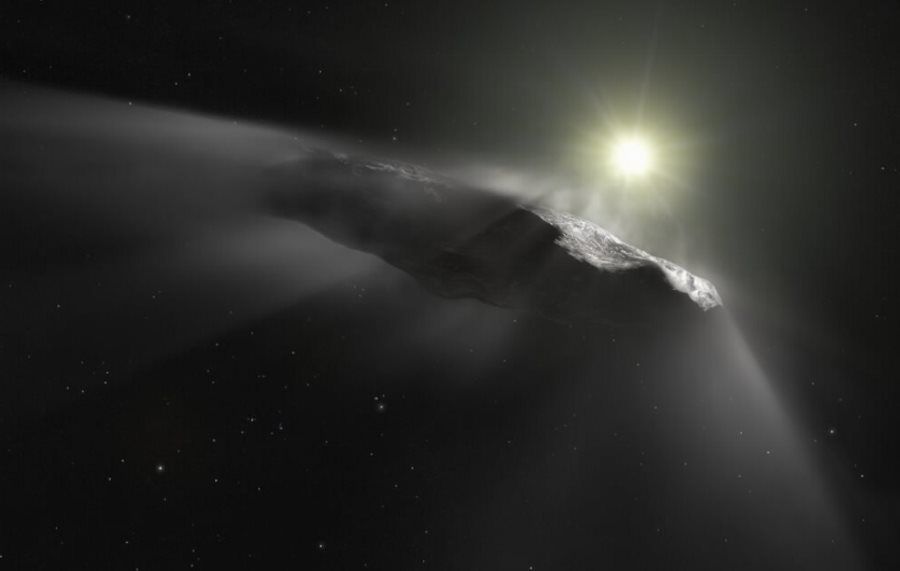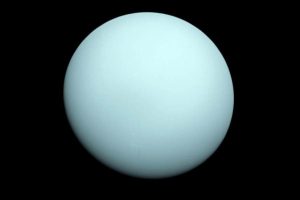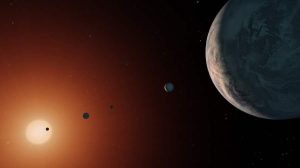New data analysis reveals true identity of ‘Oumuamua object

New data analysis reveals true identity of ‘Oumuamua’ object
The first observed object to enter our solar system from interstellar space is a comet, scientists have ruled. They base their claims on new analyses of measurements that seem to confirm earlier speculations about the composition of the interstellar intruder, and may help scientists hunt for similar objects in our solar system.
‘Oumuamua was spotted last October 19 by Rob Weryk, an astronomer working on a network of telescopes located in HawaiioIn Pan-STARRS (Panoramic Survey Telescope And Rapid Response System). Initially, astronomers were not sure what they were dealing with. No cometary activity was observed, so the object was classified as an asteroid.
In the absence of previous observations of this type of objectow the rules for naming such celestial bodies had yet to be established by the International Astronomical Union. The object was classified, as interstellar asteroid 1I / 2017 U1 (`Oumuamua – From the Hawaiian term „he first messenger arriving from afar”).
Further study of the object revealed that it is about 400 meters in sizeoin length and strongly elongated shape, resembling a cigar. The astronomers also reported that it is dark red in color and about ten times longer than the wider. It flew into our solar system from interstellar space at tremendous speed from a direction almost perpendicular to the plane of the orbits of the planets in our system. Its orbit indicated an origin in the vicinity of the constellation Luteus.
Although it was classified as an interstellar asteroid, not all researchers agreed. But determining whether it is an asteroid or a comet has proven extremely difficult. – The images thatore we obtained using the roThe telescopesow, showed neither the coma nor the tail usually associated with comets – said Marco Micheli of the European Space Agency, head of theowny author of the study.
Using several powerful telescopesow, m.in. From the Very Large Telescope in Chile and the Hubble Space Telescope’a, Micheli and together with a team of scientistsow tracked the route of the interstellar visitor from late October to early January 2018. The results of this research were published in the pages of the journal „Nature”.
In determining the position of ‘Oumuamua against a backdrop of stars, scientists noted that the podrożuje w sposob, ktorego cannot be explained by the gravitational influence of the Sun, planets and other major bodies in the solar system. Instead, they found that the object’s trajectory and acceleration could best be explained by the gases ejected by the ‘Oumuamua. This process is characteristic of a comet, not an asteroid, although a tail of gas and dust has never been observed, whichory companion to most comets.
Loss of water vapor and other gasesow slightly changes the acceleration of the object. The change is so small that it could only be seen by the most advanced observational instruments. And these were the ones available to the teamoMichelie’s.
– We analyzed the detailedołowo other possible explanations, and each of them had gaps, either because the effect was too weak or because its behavior did not fit the data – admitted Micheli.
When ‘Oumuamua approached the Sun, began to warm up, and its icy heart began to melt. This released gases thatore made their way to the surface and shot outward, causing the object to slightly alter its acceleration.
The degree of outgassing is small in cfown comparison to typical comets. ‘Oumuamua emits roalso relatively little debris, perhaps because the dust particles are too large and heavy for weak outgassing to eject them into space. This may explain why the object never formed a trailing tail.
Sourceosource: Science, Nature, photo. ESA/Hubble, NASA, ESO, M. Kornmesser




